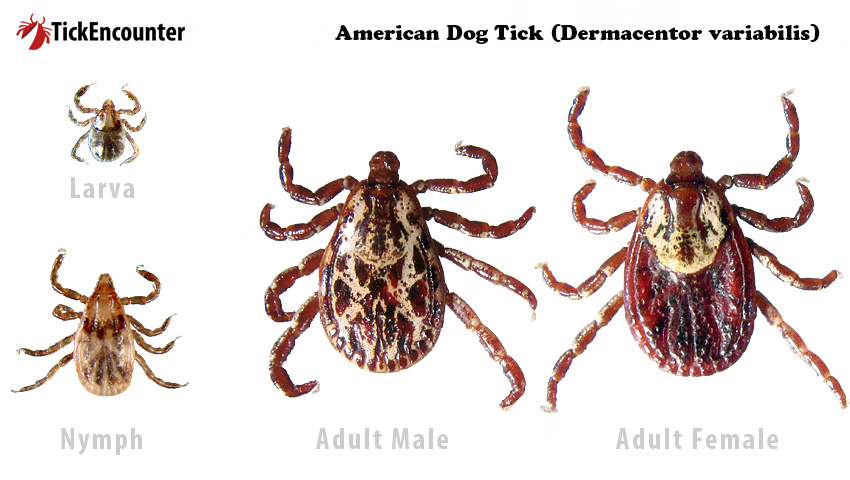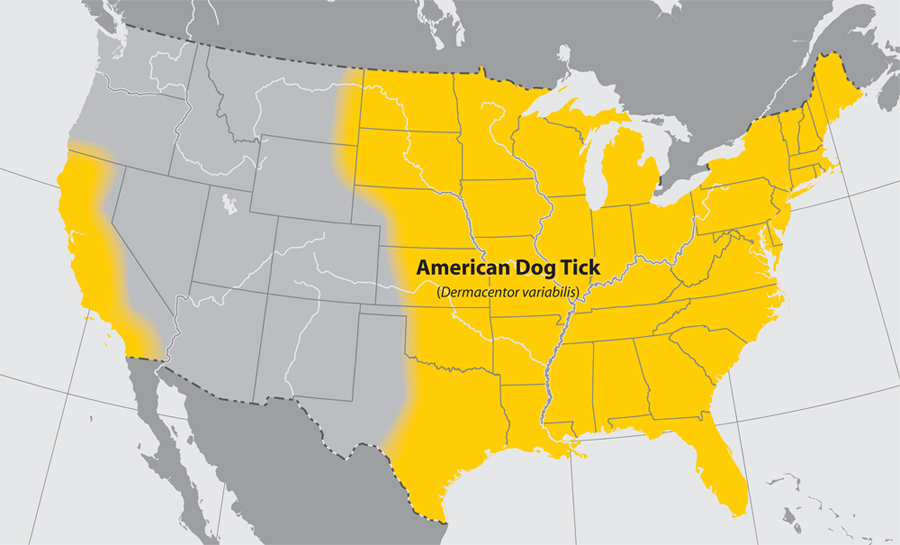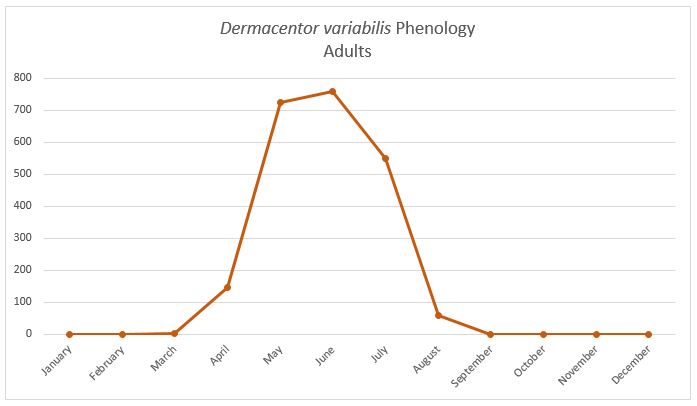American Dog Tick
Dermacentor variabilis
Why should you check for ticks?
Worldwide, ticks are known transmitters of pathogens to humans, pets, livestock, and wild animals. Removing a tick quickly can reduce the risk of contracting a tick-borne disease.
What do American Dog ticks look like?
American Dog ticks vary in size depending on the life stage. Adult females are the largest followed by the slightly smaller males. Nymphs are about the size of a poppy seed while the larvae are slightly larger than the head of a pin.

Image Source: TickEncounter
When and where are you most likely to see an American Dog tick?
American Dog tick nymphs are active late winter through spring. Their primary hosts include small mammals such as mice or voles. Adults are active spring through summer. Their primary hosts include dogs and humans. Both adults and nymphs are primarily found in woody, shrubby, long grass areas.

Image Source: CDC
Peak activity period of adult American Dog ticks

American Dog tick life cycle
The American Dog tick is a three-host tick, each development stage feeds on a different host. Newly hatched six-legged larvae feed on small rodents for 3 to 6 days and then drop from the host. After about a week it molts and becomes an eight-legged nymph. The nymph feeds again for about 3 to 11 days on another small mammal and once engorged drops to the ground. After two to three weeks, it molts and becomes an eight-legged adult. As an adult, the American Dog tick feeds on large mammals such as dogs or humans. The adult female feeds for 7 to 10 days and then drop to the ground. After several days, it lays 4,000 to 6,000 eggs over a 14-32 day period. The adult males take a brief bloodmeal and then mates with the feeding female. Unfed larvae can live up to 15 months, nymphs 20 months, and adults 30 months.
Associated pathogens
Pathogens associated with the American Dog tick are Rickettsia rickettsii, which causes Rocky Mountain Spotted fever and Francisella tularensis which causes Tularemia.
Treatment
Infections acquired through the bite of an American Dog tick are treatable, especially if you catch it early. See your doctor if you experience any symptoms consistent with tickborne illness and have spent time outdoors.
Back to homepage